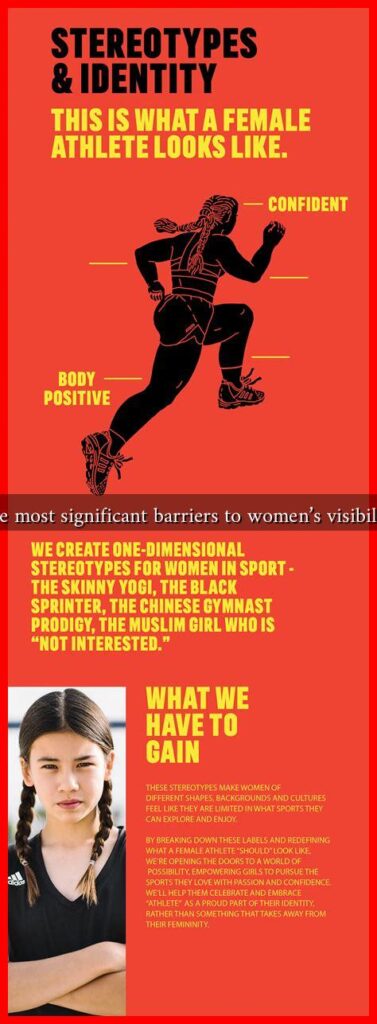-
Table of Contents
What are the Most Significant Barriers to Women’s Visibility in Sports
Women’s participation in sports has grown significantly over the past few decades, yet their visibility remains disproportionately low compared to their male counterparts. This article explores the most significant barriers that hinder women’s visibility in sports, examining cultural, institutional, and media-related factors that contribute to this ongoing issue.
Cultural Stereotypes and Gender Norms
Cultural perceptions of gender roles play a crucial role in shaping women’s visibility in sports. Traditional views often associate femininity with grace and delicacy, while masculinity is linked to strength and competitiveness. These stereotypes can discourage women from participating in sports or pursuing athletic careers. Key factors include:
- Social Conditioning: From a young age, girls are often encouraged to engage in activities deemed “appropriate” for their gender, such as dance or gymnastics, rather than team sports like football or basketball.
- Perception of Athleticism: Women athletes frequently face skepticism regarding their abilities, leading to a lack of support from peers, coaches, and even family members.
- Fear of Judgment: Many women report feeling judged or objectified in sports settings, which can deter them from participating or pursuing visibility.
Institutional Barriers
Institutional factors also play a significant role in limiting women’s visibility in sports. These barriers can be systemic and deeply rooted in the structures of sports organizations and educational institutions. Some of the most pressing issues include:
- Funding Disparities: Women’s sports often receive significantly less funding than men’s sports, leading to fewer resources for training, facilities, and promotion. According to a report by the Women’s Sports Foundation, only 4% of sports media coverage is dedicated to women’s sports.
- Lack of Representation: Women are underrepresented in leadership positions within sports organizations, which can perpetuate a cycle of neglect regarding women’s sports. For instance, as of 2021, only 20% of coaching positions in NCAA sports were held by women.
- Limited Opportunities: Many schools and colleges prioritize men’s sports, resulting in fewer opportunities for women to compete at higher levels. This lack of visibility can hinder the development of future female athletes.
Media Representation
The media plays a pivotal role in shaping public perception and visibility of women in sports. Unfortunately, the representation of female athletes is often minimal and stereotypical. Key issues include:
- Underreporting: Women’s sports receive significantly less coverage than men’s sports, leading to a lack of awareness and interest among fans. A study by the University of Southern California found that only 5% of sports coverage is dedicated to women’s sports.
- Sensationalism: When women athletes are covered, the focus is often on their appearance or personal lives rather than their athletic achievements. This can undermine their credibility and visibility as serious athletes.
- Limited Sponsorship: Brands are less likely to sponsor women’s sports, which further reduces visibility and financial support for female athletes. This lack of sponsorship can create a cycle of invisibility, as fewer resources lead to less media coverage.
Case Studies and Examples
Several case studies highlight the barriers to women’s visibility in sports:
- The U.S. Women’s National Soccer Team: Despite their success, including winning the FIFA Women’s World Cup four times, the team has fought for equal pay and recognition compared to their male counterparts.
- Title IX: While Title IX has significantly increased female participation in sports at educational institutions, disparities in funding and resources still persist, affecting visibility and opportunities.
- Women in the Olympics: Although the Olympics have made strides in including women, they still face challenges in terms of media coverage and sponsorship compared to male athletes.
Conclusion
The barriers to women’s visibility in sports are multifaceted, encompassing cultural stereotypes, institutional inequities, and media representation issues. Addressing these barriers requires a concerted effort from all stakeholders, including sports organizations, educational institutions, and the media. By promoting gender equality in sports, we can create a more inclusive environment that celebrates female athletes and enhances their visibility. As society continues to evolve, it is crucial to challenge outdated perceptions and advocate for equal opportunities for women in sports.
For further reading on this topic, you can explore resources from the Women’s Sports Foundation.

